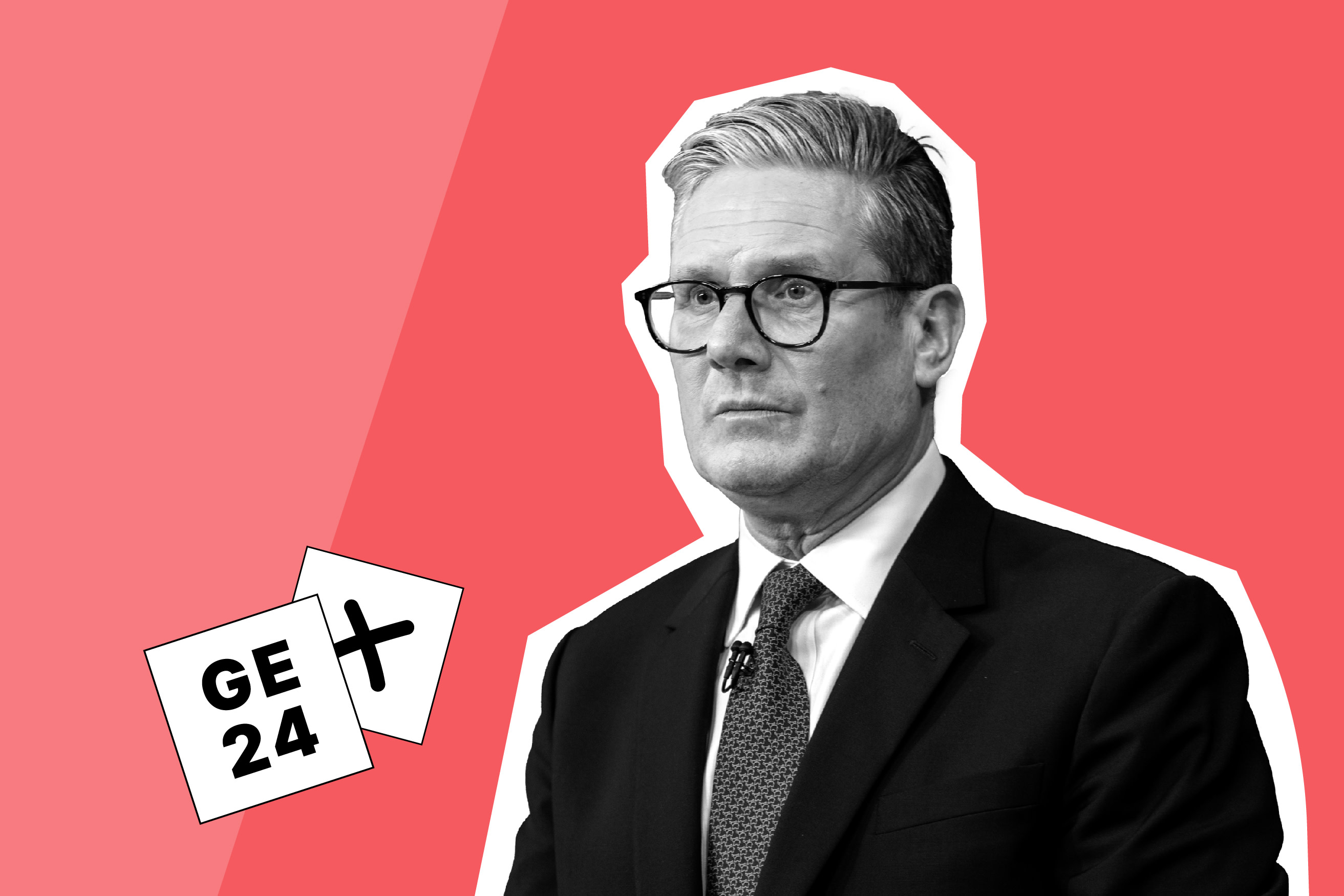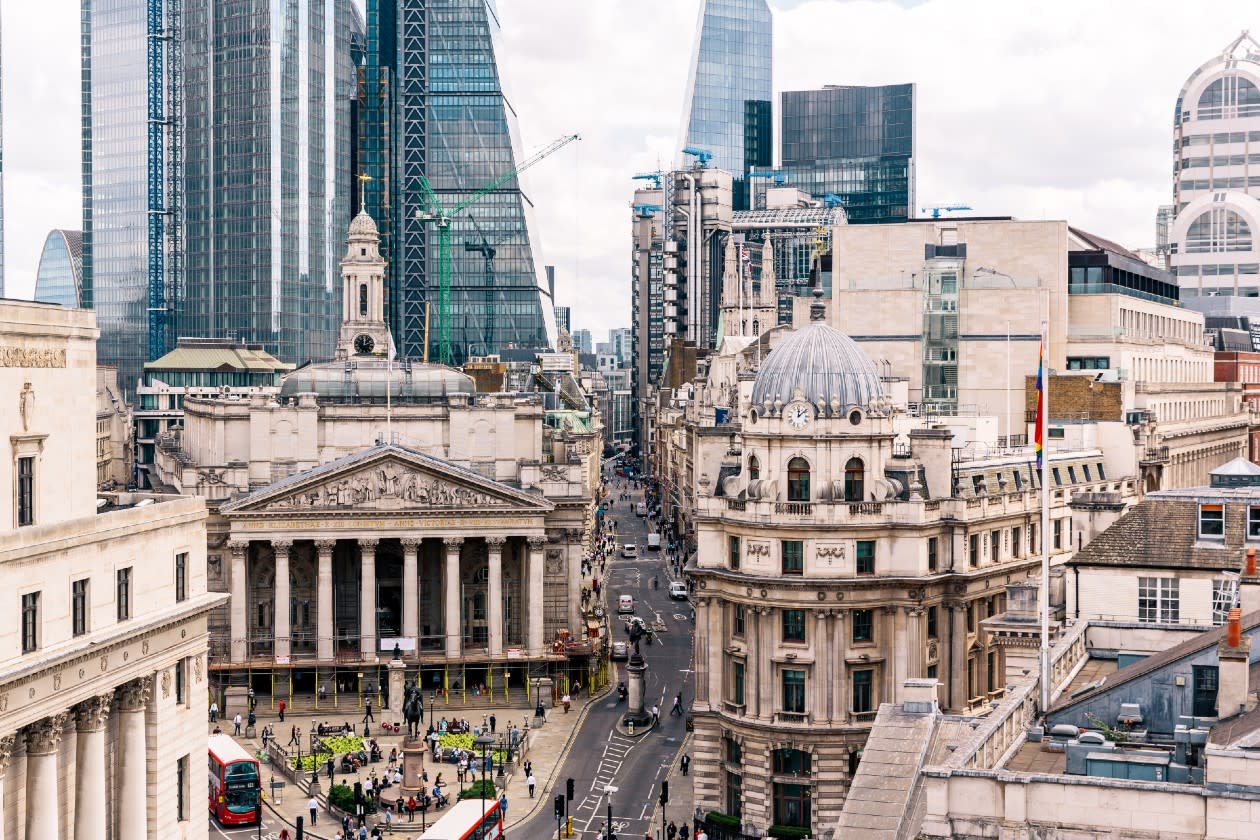The Bank of England (BoE) are meeting on 1 August, when it will announce what’s next for interest rates. The BoE will also deliver its latest forecasts on inflation and growth in the Monetary Policy Report.
In recent weeks there‘s been big swings in UK interest rate expectations, and whether the BoE would cut rates for the first time since 2020.
The market is now expecting around a 50% chance of a rate cut at this meeting with just over 1.5 rate cuts currently priced in for the rest of 2024.
So, a rate cut in August is now pretty much a coin toss, albeit one with big ramifications for financial markets.
Headline inflation fell to 2% in May, however, markets are still reluctant to fully price in a rate cut because of stubborn service price inflation. This is still rising at more than 5% annually.
This article isn’t personal advice. All investments and any income from them can rise and fall in value, so you could get back less than you invest. Yields are variable and no returns are ever guaranteed. If you’re not sure whether a course of action is right for you, ask for financial advice.
UK headline consumer price index (CPI) rate
What’s has Taylor Swift done for the UK economy?
Headline inflation has fallen sharply this year and is down some 4% in 12 months, but service price growth has taken longer to moderate. There are concerns that service price growth might stay sticky over the summer months because of the ‘Taylor Swift effect’.
The US music star played 10 dates in June across UK stadiums, with nearly one million people in attendance. If you can pack out a stadium with 80,000 ‘Swifties’, they’ll also fill up hotel rooms and restaurant reservations.
There’s caution about ticket, hotel, and restaurant prices on the back of the summer concert season. Added to this, Swift is returning to London in August, so upward pressure on service prices might stay sticky for the coming months.
Cautious talk from the Bank of England
Bank of England policy makers including Jonathan Haskell, and BoE Chief Economist Huw Pill, have recently spoken against cutting rates too quickly.
Haskell, who voted for rate hikes until February, recently said he didn’t want to cut rates from their 16-year high, as inflation pressures remain in the jobs market and aren’t yet showing signs of fading.
Likewise, Huw Pill, who has consistently voted to keep rates on hold this year, said the timing of a rate cut was an ‘open question’ due to strong price pressures.
So, it looks like the vote setting committee at the BoE aren’t united in calling for a rate cut.
Labour policies might deter rate cuts
Wage pressures are a concern for the BoE, after the living wage was raised by 9.8% in April, the biggest increase since 2011.
Added to this, the new Labour government has plans to change the Low Pay Commission remit so that working people’s pay will cover the cost of living. Its current remit is based on a target to reach 66% of median earnings.
So, wage pressures might not disappear anytime soon. And the BoE needs to balance falling headline inflation with core inflation that might stay elevated for some time.
BoE members have already spoken out about the risks of core inflation, which suggests they might err on the side of caution when it comes to managing core inflation risks.
Could there be a UK economic upgrade?
It’s not just inflation that could still be a hurdle to a rate cut for the UK.
At this August’s meeting, we could see the BoE shelve a rate cut and instead choose to raise their forecasts for both growth and inflation.
The BoE’s most recent gross domestic product (GDP) forecast for the second quarter this year was 0.2%. This looks out of date since the monthly rate of GDP for May was 0.4%.
It’s unusual for central banks to cut rates while also raising economic forecasts. The European Central Bank (ECB) did it in June, but it’s unlikely the BoE will follow suit.
Interestingly, compared to other central banks the BoE does have room to cut rates.
Right now, the real interest rate in the UK is 3.25%. This compares with 2.2% for the US, 1.85% for Canada, and 1.25% for the Eurozone. As inflation has fallen rapidly in the UK, the real interest rate has risen to the highest in the G7.
The yield differential in the UK is boosting the pound.
Sterling is the best performing currency in the G10 foreign exchange space so far this year – GBP/USD is higher by more than 2% and GBP/JPY is higher by more than 12%.
This difference might stay in the pound’s favour for the foreseeable. That’s because the market is currently expecting more interest rate cuts from the Federal Reserve and the ECB later this year.
A strong pound might have a dampening effect on inflation down the line, however, this might not impact domestically driven inflation like wage growth. This is why the BoE might disregard the high real interest rate in the UK come 1 August.
A delay to rate hikes might eventually weigh on UK stocks, but for now the FTSE 100 is moving with global trends and the FTSE 250 is at its highest level since 2022. Past performance isn’t a guide to the future.
At this stage though, investors don’t seem to be worried about a delay in UK rate cuts.
Kathleen Brooks is the Founder of Minerva Analysis, a market analysis company. Hargreaves Lansdown may not share the views of the author.






